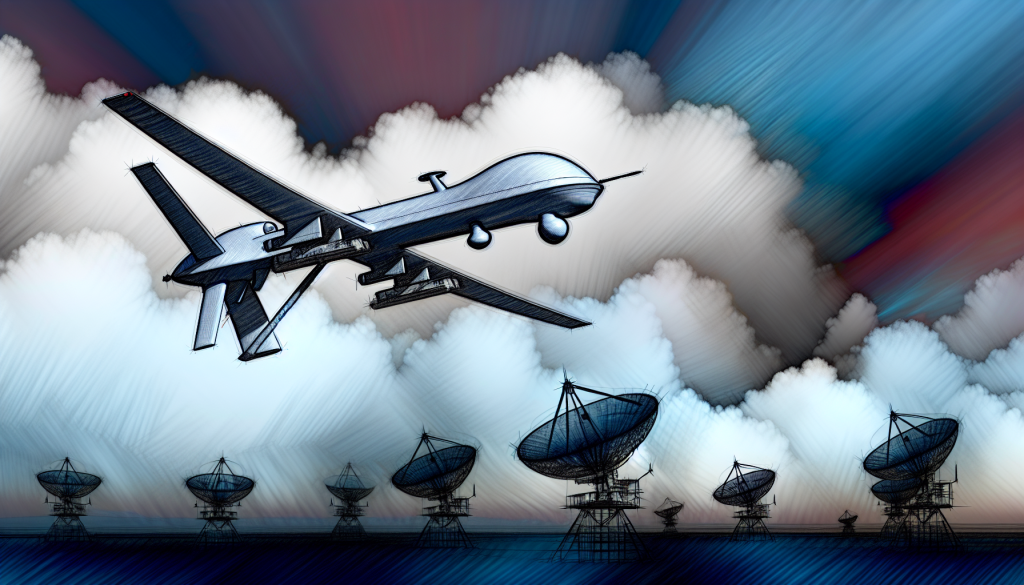The Future of Warfare: AI-Piloted Drones in the U.S. Air Force
The landscape of modern warfare is rapidly evolving, and the U.S. Air Force is at the forefront of this transformation with its ambitious plans to integrate artificial intelligence (AI) into its drone operations. The implications of this development are profound, not just for military strategy but also for global security dynamics.
A New Era of Drone Warfare
The U.S. Air Force has announced its intention to deploy drones operated by AI systems as they prepare to meet emerging global threats. With plans to have around 150 AI-piloted drones in operation by the end of the decade, and the possibility of scaling up to 1,000 in the years to follow, the leadership envisions a significant shift in air combat capabilities. General Adrian Spain, head of Air Combat Command, highlighted that these AI-driven drones will operate alongside traditional manned aircraft, enhancing operational efficiency and response time in complex combat scenarios.
Enhanced Tactical Capabilities
The capabilities of AI in piloting drones extend beyond mere automation; these systems have learned intricate flying maneuvers and defensive tactics. General Spain elaborated on the possibilities, stating, “You’ve told them to go out in front and to execute an attack on a complex set of targets, and they will do that.” This underscores a transformative shift where AI can perform complex tasks at speed and scale unimaginable with human pilots alone.
Cost-Effective Solutions
While the technology is advanced, it remains crucial for military budgets. The estimated cost of these AI drones ranges between $20 to $30 million each—considerably less than their manned counterparts. This affordability allows for broader deployment and potentially, a significant increase in the overall capabilities of the Air Force without overwhelming financial burden.
A Global Context
The timeline for deploying AI-piloted drones coincides with a notable rise in military advancements from other global players, particularly China. Recently, China showcased its own advancements in drone technology during a massive military parade in Beijing. This included the debut of cutting-edge fighter jets and AI-driven drones, signaling a clear intent to assert military prowess in the international arena.
China’s Military Show of Force
During this parade, the Chinese military presented a range of new weaponry, including a formidable AJX-002 submarine drone measuring up to 65 feet. This submarine drone is designed for surveillance and reconnaissance missions, which speaks to the evolving role of unmanned systems in warfare. Moreover, the display also featured aerial and underwater drones alongside hypersonic missiles, all intended to send a strong message to rivals like the United States and its allies.
Diplomatic Undertones
The event was not just a display of military might; it served as a diplomatic stage for showcasing alliances as well. Russian President Vladimir Putin and North Korean leader Kim Jong Un were both in attendance, emphasizing the geopolitical significance of China’s military advancements. This gathering of powers presents a complex tapestry of international relations, suggesting that the balance of military capabilities is more crucial than ever.
Strategic Implications
As the U.S. advances its AI capabilities, the strategic landscape of warfare is becoming increasingly multi-faceted. The integration of AI into aerial combat will likely change engagement protocols and the dynamics of global military power. The ability to deploy drones that can operate independently or in concert with human pilots may redefine engagement rules on the battlefield, raising questions about the ethics and regulations surrounding autonomous warfare.
In summary, the U.S. Air Force’s strategic initiative to integrate AI-piloted drones not only represents a significant leap in military technology but also catalyzes a broader reevaluation of global military strategies. As nations rush to modernize their arsenals, the interplay between AI capabilities and human oversight will remain a critical area for discussion in the quest for security in the modern age.

